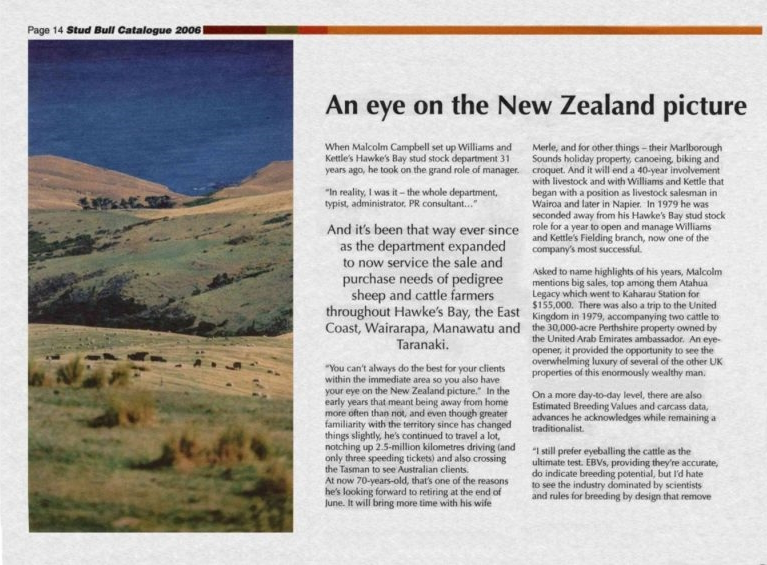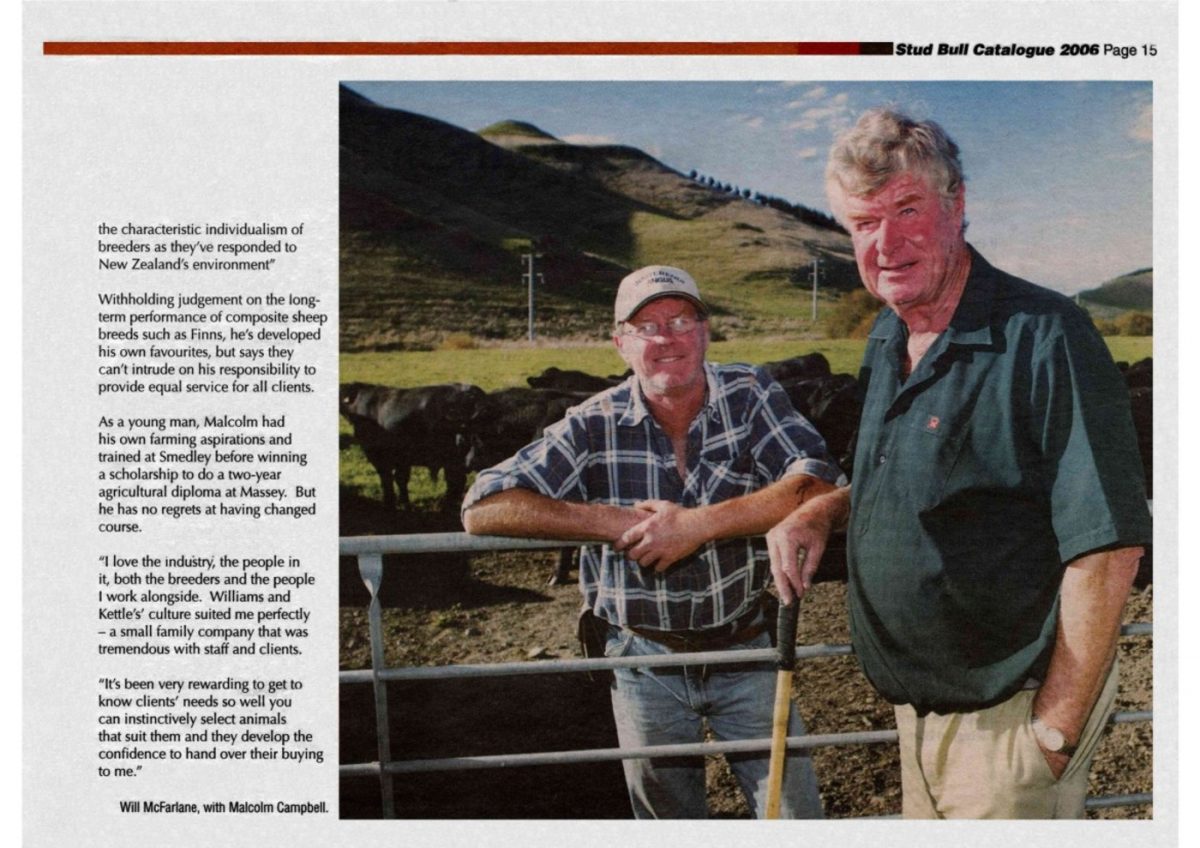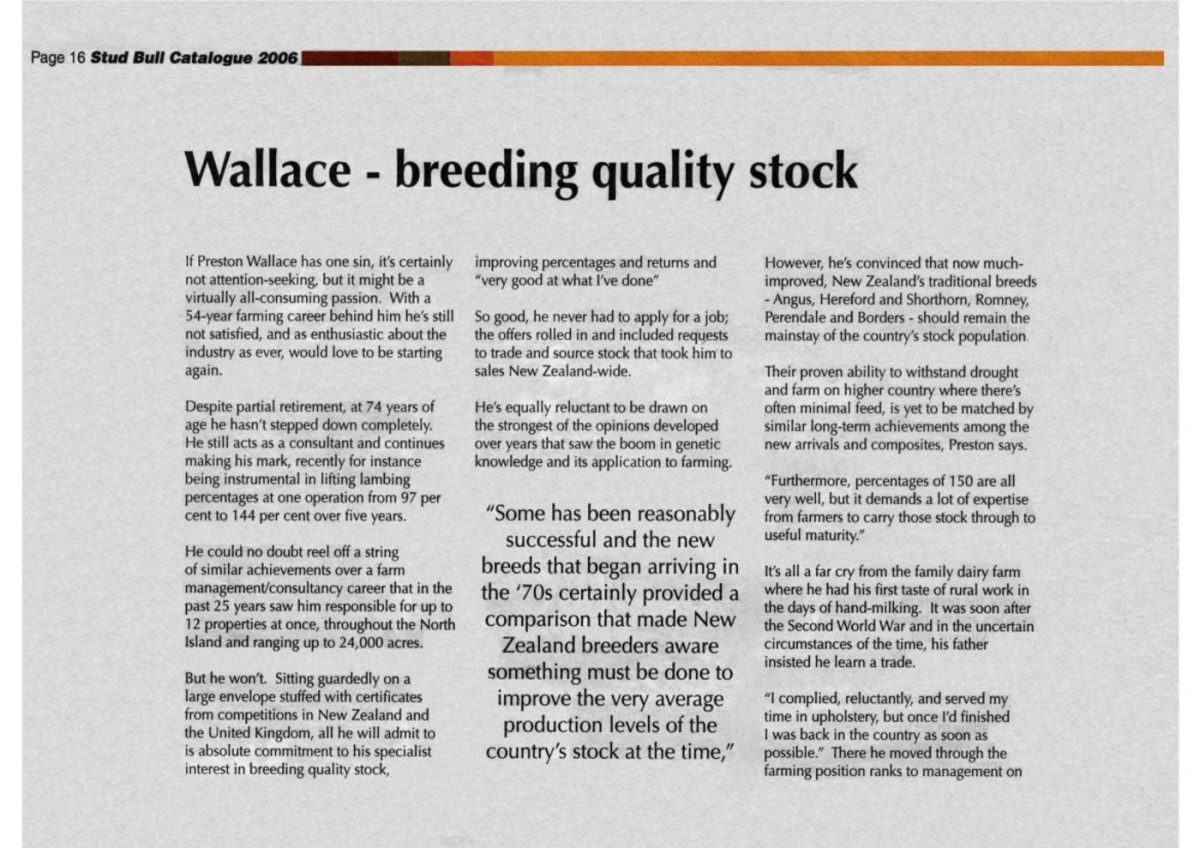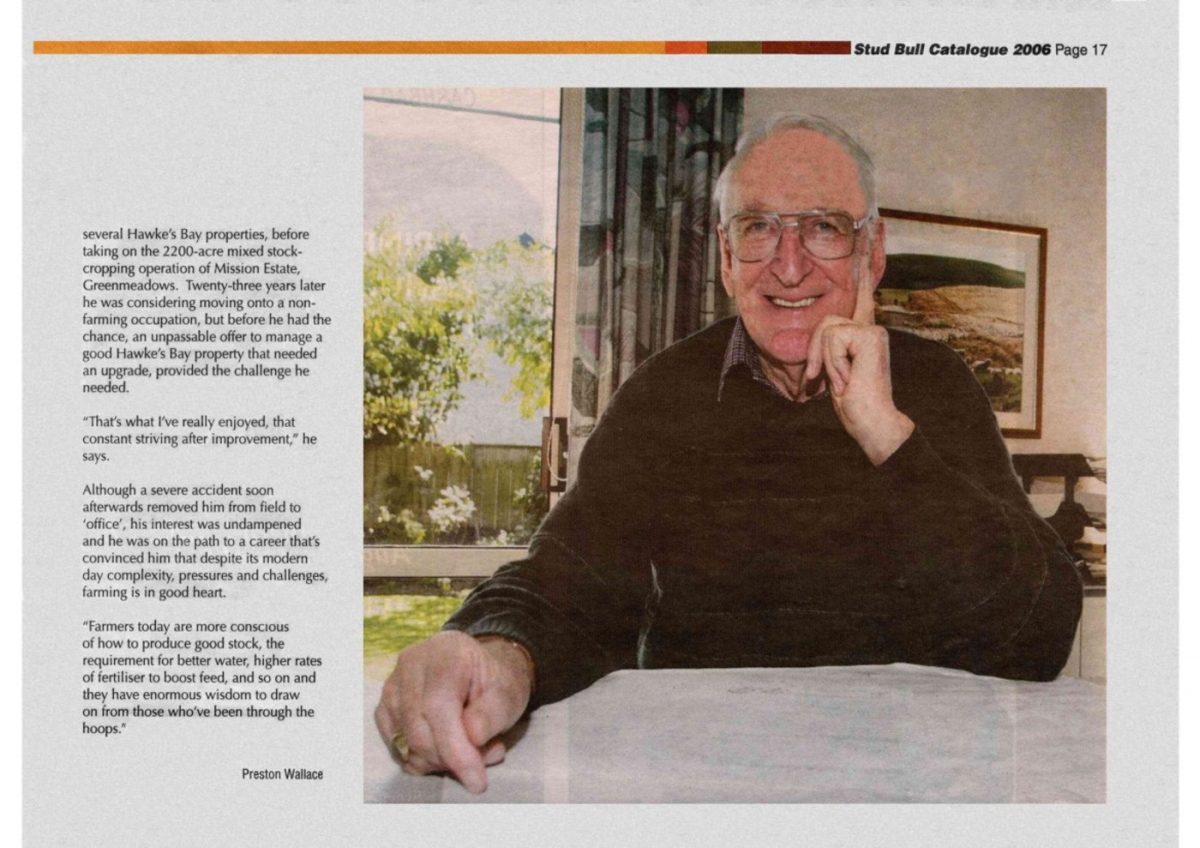Page 16 Stud Bull Catalogue 2006
Wallace – breeding quality stock
If Preston Wallace has one sin, it’s certainly not attention-seeking, but it might be a virtually all-consuming passion. With a 54-year farming career behind him he’s still not satisfied, and as enthusiastic about the industry as ever, would love to be starting again.
Despite partial retirement, at 74 years of age he hasn’t stepped down completely. He still acts as a consultant and continues making his mark, recently for instance being instrumental in lifting lambing percentages at one operation from 97 per cent to 144 per cent over five years.
He could no doubt reel off a string of similar achievements over a farm management/consultancy career that in the past 25 years saw him responsible for up to 12 properties at once, throughout the North Island and ranging up to 24,000 acres.
But he won’t. Sitting guardedly on a large envelope stuffed with certificates from competitions in New Zealand and the United Kingdom, all he will admit to is absolute commitment to his specialist interest in breeding quality stock, improving percentages and returns and “very good at what I’ve done”.
So good, he never had to apply for a job; the offers rolled in and included requests to trade and source stock that took him to sales New Zealand-wide.
He’s equally reluctant to be drawn on the strongest of the opinions developed over years that saw the boom in genetic knowledge and its application to farming.
“Some has been reasonably successful and the new breeds that began arriving in the ‘70s certainly provided a comparison that made New Zealand breeders aware something must be done to improve the very average production levels of the country’s stock at the time,”
However, he’s convinced that now much-improved, New Zealand’s traditional breeds – Angus, Hereford and Shorthorn, Romney, Perendale and Borders – should remain the mainstay of the country’s stock population.
Their proven ability to withstand drought and farm on higher country where there’s often minimal feed, is yet to be matched by similar long-term achievements among the new arrivals and composites, Preston says.
“Furthermore, percentages of 150 are all very well, but it demands a lot of expertise from farmers to carry those stock through to useful maturity.”
It’s all a far cry from the family dairy farm where he had his first taste of rural work in the days of hand-milking. It was soon after the Second World War and in the uncertain circumstances of the time, his father insisted he learn a trade.
“I complied, reluctantly, and served my time in upholstery, but once I’d finished I was back in the country as soon as possible.” There he moved through the farming position ranks to management on















Do you know something about this record?
Please note we cannot verify the accuracy of any information posted by the community.